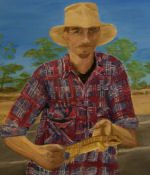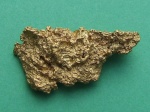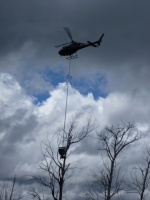GPS Amateur!
4 posters
Page 1 of 1
 GPS Amateur!
GPS Amateur!
Hi everyone
Just need a little help, I'm wanting to go to a place i have never been, only got the co ords so i purchased an etrex, finally figured out how to put the co ords into it, well thought i did, wanted to put in some but they come up one number short, what am i missing? the manual does not focus on us first time GPS users, and has been a little struggle to try and figure out how to use it. any help would be great!
having said that is the co ordinates off google earth sufficient enough to use


its official i dont know what im doing.
Just need a little help, I'm wanting to go to a place i have never been, only got the co ords so i purchased an etrex, finally figured out how to put the co ords into it, well thought i did, wanted to put in some but they come up one number short, what am i missing? the manual does not focus on us first time GPS users, and has been a little struggle to try and figure out how to use it. any help would be great!
having said that is the co ordinates off google earth sufficient enough to use
its official i dont know what im doing.

Aymz- New Poster

- Number of posts : 11
Registration date : 2011-03-18
 Re: GPS Amateur!
Re: GPS Amateur!
Hi Amyz,
Welcome to the wonderful world of GPS! All GPS units carry different datum or formats for co-ords, kind of like different languages in a way. I would say that if you are one digit short, then wherever or whoever you are getting them from isn’t giving you all the correct details. If you can find the area on google then you will be able to work out from there the approximate co-ords for the area and that will get you close.
TIP: To add a waypoint to an Etrex, first walk outside as they are allot happier when they can read or pick up satellites. Then mark the spot you are in and simply "edit the waypoint" and change the co-ords to those that you wish to enter.
Feel free to PM me if you have any questions.
Nature Pete.


Welcome to the wonderful world of GPS! All GPS units carry different datum or formats for co-ords, kind of like different languages in a way. I would say that if you are one digit short, then wherever or whoever you are getting them from isn’t giving you all the correct details. If you can find the area on google then you will be able to work out from there the approximate co-ords for the area and that will get you close.
TIP: To add a waypoint to an Etrex, first walk outside as they are allot happier when they can read or pick up satellites. Then mark the spot you are in and simply "edit the waypoint" and change the co-ords to those that you wish to enter.
Feel free to PM me if you have any questions.
Nature Pete.

Nature_Pete- Contributor Plus

- Number of posts : 255
Registration date : 2011-03-09
 Re: GPS Amateur!
Re: GPS Amateur!
Hi Aymz, As Nature pete described there are different basic languages that needed to be understood to a point.
For you co-ords to work you need to know which ones they are (I will explain shortly)
Google earth is a great tool and if your etrex has a usb connection on it then you can transfere information from google earth to your gps and visa versa.
To do this there is some simple settings that need to be set up so that the gps and the program can 'talk' to each other.
When it comes to coordinates these are the different types there are....
decimal degrees
degrees, minutes, seconds
degrees, decimal mintues. (I use this)
Universal Transverse Mercator
To use a selected coordinate you need to know which of the above it was given to you in.
If this is too hard to find out, you could put the coordinates into google earth and see where it takes you (if anywhere) if it doesn't work then you can change the settings in the options menu and try again until the destination is found. At least then you will know from then on which to use. I use the degrees, decimal minutes because I find it easiest to work with, others may differ.
If you are still stuck maybe post the coordinates (if your spot is secret just change the numbers for an example) and we may be able to help you set your gps and google earth to be user friendly for you.
Hope this helps.
Cheers

GoldstalkerGPX- Contributor Plus

- Number of posts : 1732
Age : 100
Registration date : 2009-07-27
 Re: GPS Amateur!
Re: GPS Amateur!
G'Day Amyz,
A GPS is like a computer "the best tool in your kit when everything is working for you and a pure pain when it isn't".
If you're working with Lat and Long you only have a couple of slight variations to deal with. Personally I use Degrees, Minutes, seconds.
As a guide if using Degrees, Minutes, Seconds:
The first number group of both Lat/Long represents a starting point for a block of area 60x60 Nautical Miles (111.15km x 111.15km).
The second number group breaks that area down to small blocks 1x1 Nautical Miles (1852m x 1852m ).
The third group breaks the 1 Nautical mile block down further.
The most important thing is to ensure that the source of the co-ordinates is working on the same variant that your GPS is, it is possible to convert them with simple calculations but to make life easier the GPS unit can be changed to handle the source variant.
To keep things simple get the co-ordinates to a known site near your home (airport, footy field, train station) from the source (Google maps, Etc) that you will generally use. Then place them into your GPS and see if it takes you there, if not, change your settings to another variant of Lat/Long. If it’s on the wrong variant it will only take you a few mile out of your way.
It’s a hard thing to explain in writing, but, if you’re still having trouble please feel free to PM me your phone number and I will explain it to you.
Legs
A GPS is like a computer "the best tool in your kit when everything is working for you and a pure pain when it isn't".
If you're working with Lat and Long you only have a couple of slight variations to deal with. Personally I use Degrees, Minutes, seconds.
As a guide if using Degrees, Minutes, Seconds:
The first number group of both Lat/Long represents a starting point for a block of area 60x60 Nautical Miles (111.15km x 111.15km).
The second number group breaks that area down to small blocks 1x1 Nautical Miles (1852m x 1852m ).
The third group breaks the 1 Nautical mile block down further.
The most important thing is to ensure that the source of the co-ordinates is working on the same variant that your GPS is, it is possible to convert them with simple calculations but to make life easier the GPS unit can be changed to handle the source variant.
To keep things simple get the co-ordinates to a known site near your home (airport, footy field, train station) from the source (Google maps, Etc) that you will generally use. Then place them into your GPS and see if it takes you there, if not, change your settings to another variant of Lat/Long. If it’s on the wrong variant it will only take you a few mile out of your way.
It’s a hard thing to explain in writing, but, if you’re still having trouble please feel free to PM me your phone number and I will explain it to you.
Legs

Crazy Legs- New Poster

- Number of posts : 16
Age : 55
Registration date : 2011-05-03
Page 1 of 1
Permissions in this forum:
You cannot reply to topics in this forum